Fluoride Tray
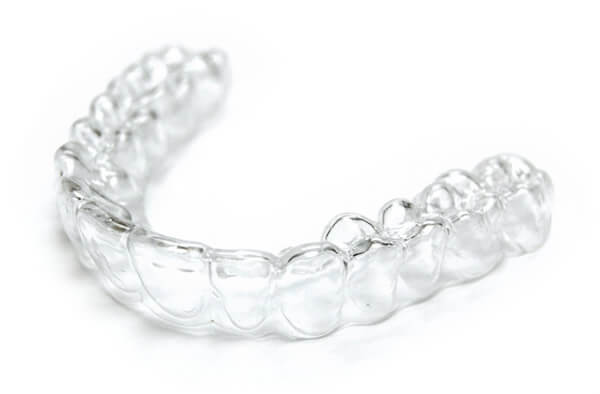
What Is A Fluoride Tray?
A Fluoride Tray is a custom-fitted dental device that helps strengthen your teeth by applying fluoride directly to them. Made from thin, flexible plastic, the tray is crafted to fit comfortably over your teeth. Once filled with a fluoride gel or foam, the tray is worn for a specified period (usually a few minutes or sometimes overnight) to allow fluoride to penetrate the enamel, strengthening and protecting your teeth.
Fluoride trays offer an effective preventive treatment, particularly for individuals at high risk of cavities, those with tooth sensitivity, dry mouth, or early-stage decay. Here’s everything you need to know before deciding if fluoride trays are right for you:
- Who Should Consider Using a Fluoride Tray?
- What Are The Advantages Of A Fluoride Tray?
- How Much Does A Fluoride Tray Cost?
- What Are The Steps In The Fluoride Tray Making Procedure?
- How To Wear Your Fluoride Tray
- Recommended Oral Hygiene Products For Fluoride Tray
- Oral Hygiene Tips For Fluoride Tray
If you have any further questions about Fluoride Trays or other dental services offered at Atlas Dental, please contact us.

Free phone consultation
Have questions about fluoride trays? Schedule a free phone consultation with our Toronto dentist.

5 star google reviews
Our patients love us! See for yourself why more and more people are choosing Atlas Dental for their fluoride trays.

Book Fluoride Tray Appointment
Ready to make a custom fitted fluoride tray? Book an appointment online.
Who Should Consider Using a Fluoride Tray?
Fluoride trays are suitable for a variety of patients, including:
- Children: Fluoride trays can protect developing teeth, reducing future dental problems.
- Adults at High Risk of Decay: Those with a history of cavities or higher decay risk can benefit from fluoride’s enamel-strengthening properties.
- Patients with Sensitive Teeth: Fluoride can reduce discomfort caused by sensitivity, making it easier to eat and drink.
- Individuals with Early-Stage Tooth Decay: Fluoride trays can remineralize enamel, helping to stop decay progression.
- Patients with Dry Mouth: Dry mouth increases the risk of decay, and fluoride trays provide essential protection against tooth damage.
If you fall into any of these categories, a fluoride tray could be an excellent addition to your dental care routine. To determine if a fluoride tray is right for you, please contact us.
What Are The Advantages Of A Fluoride Tray?
Using a fluoride tray has several benefits:
- Customized Fit: Each fluoride tray is tailored to your unique dental structure, ensuring even fluoride distribution and prolonged contact with your teeth.
- Stronger Enamel: Fluoride helps strengthen enamel, making teeth more resistant to decay and cavities.
- Reduced Sensitivity: Fluoride treatment can decrease tooth sensitivity, especially beneficial for those with worn enamel or gum recession.
- Ease of Use: Applying fluoride using a tray is simple and can be done at home in just a few minutes.
- Cost-Effective Preventive Care: Compared to more intensive dental procedures, fluoride trays are an affordable way to protect your dental health long-term.
By using a fluoride tray, you can ensure that your teeth remain strong, healthy, and resistant to decay and cavities. If you have further questions about the benefits of fluoride tray treatment, please contact us.
Cost of Fluoride Tray
The cost of a Fluoride tray is $84 plus dental lab fee of $100. The codes relevant to fluoride trays in the Ontario Dental Association’s Suggested Fee Guide appear as follows:
Fluoride, Custom Appliances (home application)
- 12601 – Fluoride, Custom Appliance – Maxillary Arch: $84 + Dental Lab Fee (approximately $100)
- 12602 – Fluoride, Custom Appliance – Mandibular Arch: $84 + Dental Lab Fee (approximately $100)
Fluoride trays are usually considered a basic service by dental insurance plans and would be covered by your dental insurance. Be sure to find out from your dental insurance plan provider how much you are eligible for before going ahead with dental treatment. Your dentist can help you submit a predetermination to your dental insurance. Our fees are consistent with the ODA Fee Guide.
For patients without dental insurance, Atlas Dental is pleased to offer dental financing through Dentalcard. Affordable payment plans start at 7.95% for terms of 6 months to 6 years. To learn more about Dentalcard dental treatment financing, follow this link.
What Are The Steps In The Fluoride Tray Making Procedure?
The process of getting a custom fluoride tray involves two primary steps:
Impression Appointment:
- During the first appointment, your dentist will take an impression of your teeth using either a putty-like material or a digital scanning system.
- This impression is used to create a model of your teeth for fabricating a tray that fits perfectly.
Insertion Appointment:
- Once the tray is ready, you’ll return to the office for fitting. Your dentist will ensure a comfortable fit and provide instructions for using the fluoride tray at home.
- Recommended Fluoride Gel: We suggest X-PUR NaF Gel for effective results. Follow your dentist’s post-insertion care instructions for best results.
Once you have received your fluoride tray from the dentist, be sure to wear your fluoride tray daily for the most benefit. If you have further questions about how we make fluoride trays, please contact us.
How To Wear Your Fluoride Tray
To maximize the benefits of your fluoride tray, follow these steps:
- Brush and Floss First: Clean your teeth thoroughly before using the tray.
- Apply Fluoride Gel: Add a small amount of fluoride gel to the tray, as directed by your dentist. We recommend X-PUR NaF Gel.
- Insert and Fit the Tray: Place the tray over your teeth and bite down gently.
- Wear for the Recommended Time: Follow your dentist’s instructions on wear time based on the fluoride strength.
- Remove and Rinse: After use, remove the tray, spit out any remaining fluoride, and rinse your mouth.
- Clean the Tray: Rinse the tray with water and a soft brush, then store it open to air-dry.
It’s important to follow your dentist’s instructions carefully to ensure you are using your fluoride tray correctly and receiving its maximum benefits. For more information about how to wear your fluoride trays, please contact us.
Maintaining Oral Hygiene with a Fluoride Tray
A clean mouth is essential for both oral health and fluoride tray care. Here’s how to keep your fluoride tray and teeth clean:
- Clean Your Fluoride Tray Daily: Use an ultrasonic cleaner with a denture cleaner solution, like Polident, to remove plaque and prevent biofilm buildup on your fluoride tray.
- Brush Twice Daily: Brush your teeth thoroughly twice a day with a soft-bristle toothbrush. For better results, brush after meals whenever possible to reduce the chances of plaque buildup between meals.
- Rinse When Brushing Isn’t Possible: If brushing after meals isn’t feasible, rinse your mouth with water or an antibacterial mouthwash, such as Colgate Total 12HR Pro-Shield CPC Mouthwash, to help remove food particles and freshen your breath.
- Upgrade Your Toothbrush: For gentle but effective cleaning, we recommend using the Curaprox CS5460 Ultra Soft Swiss Toothbrush. For more thorough cleaning, an electric toothbrush, like the Philips Sonicare ProtectiveClean 6100, is a great option.
- Floss Daily: Daily flossing removes particles and plaque from areas your toothbrush can’t reach. Try GUM ButlerWeave Dental Floss or, if traditional flossing is challenging, use dental flossers or interdental brushes such as GUM Proxabrush.
- Consider a Water Flosser: For deeper cleaning, use a Waterpik Aquarius Water Flosser. This is a great addition to your routine as it effectively flushes out debris that may be missed by brushing and flossing.
- Choose a Fluoride Toothpaste: Fluoride toothpaste, such as Colgate Total Advanced Professional Clean, is recommended for cavity prevention and gum health.
It’s important to follow your dentist’s instructions carefully to ensure your fluoride trays and teeth stay clean throughout treatment. For more information about how to wear your fluoride trays, please contact us.
We also think you’ll like…
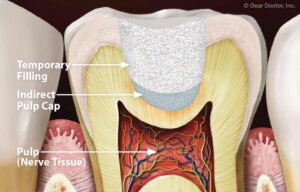
Indirect Pulp Capping
Indirect Pulp Capping What Is Indirect Pulp Capping? Indirect Pulp Capping is a dental procedure designed to protect the dental pulp — the soft, innermost
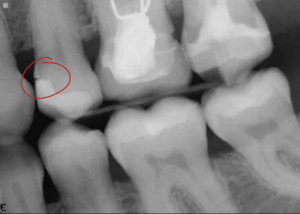
Dental Filling Open Margin
Dental Filling Open Margin What Is A Dental Filling Open Margin? A Dental Filling is a common restorative procedure that repairs damaged or decayed teeth
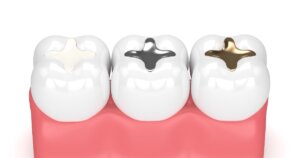
Dental Filling Pre-Operative Instructions
Dental Filling Pre-Operative Instructions What You Should Do Before Your Dental Filling Appointment Getting ready for a dental filling? At Atlas Dental, we’re here to
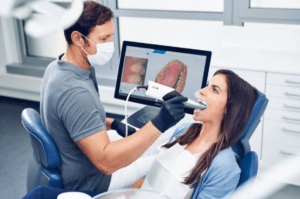
Intraoral 3D Scanner
Intraoral 3D Scanner What Is an Intraoral 3D Scanner? An Intraoral 3D Scanner is a transformative tool in modern dentistry that enables precise, digital impressions
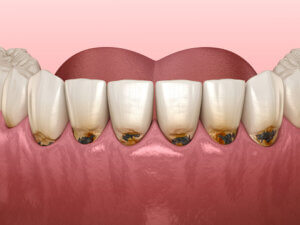
Root Cavities
Root Cavities What Are Root Cavities? Root cavities are a type of dental decay that occurs on the root surface of a tooth, typically below

Tooth Filling
Tooth Filling What Is A Tooth Filling? A Tooth Filling, or Dental Filling, is a procedure used to restore the integrity, function, and appearance of

